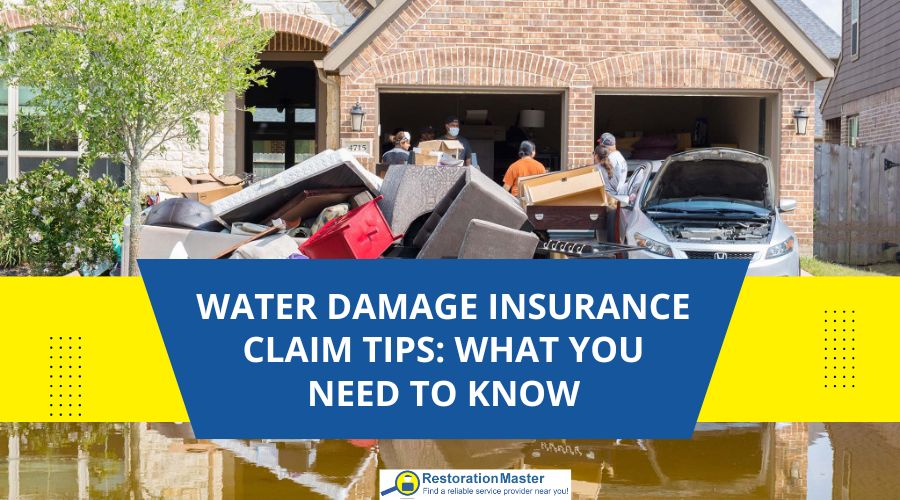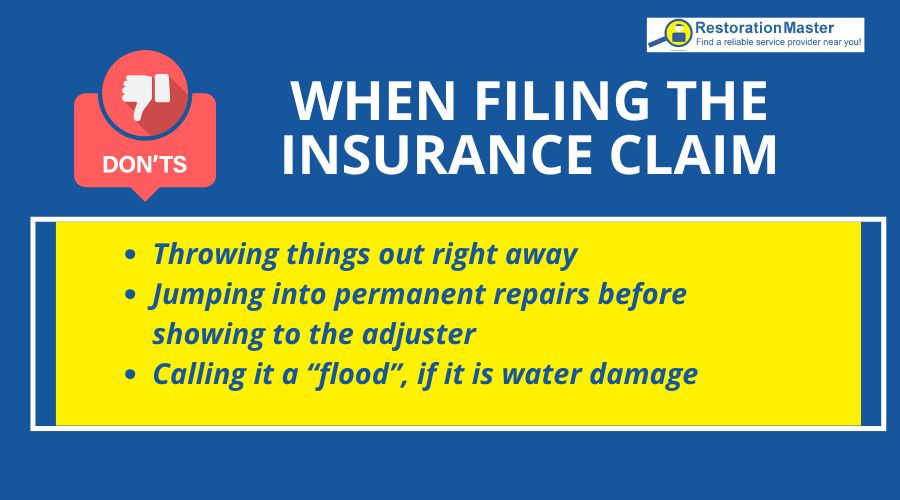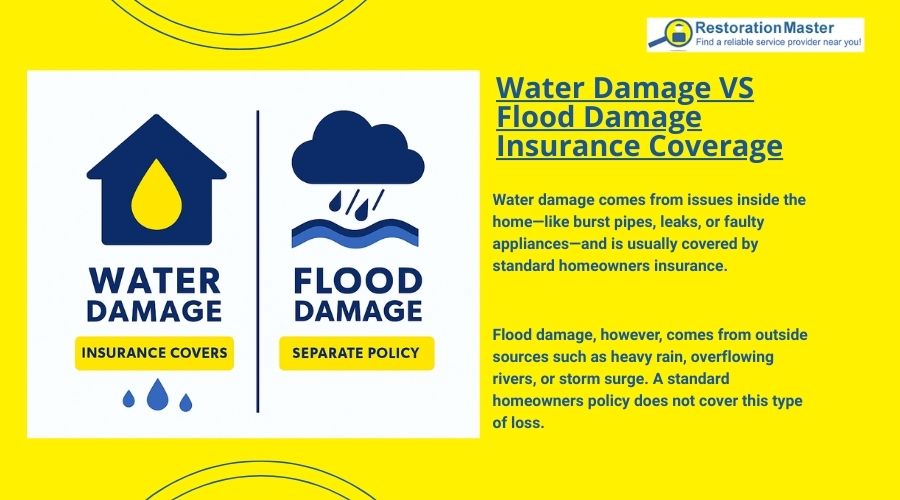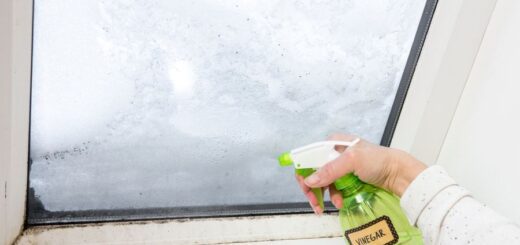Water Damage Insurance Claim Tips: What You Need to Know

Water damage is one of those events that homeowners rarely see coming until it is right in front of them. A burst pipe, an overflowing washing machine, or a heavy storm can quickly turn a normal day into one filled with stress, soaked belongings, and the urgent need to act. Once the immediate mess is under control, the next step is figuring out how to deal with the insurance claim. If you’re not sure where to start, check out our guide on How to File an Insurance Claim for Water Damage.
Did you know that about 1 in 60 insured homes in the U.S. file a water-damage or freezing damage claim each year? Water damage and freezing together account for roughly 28% of all homeowners insurance claims, highlighting just how common these incidents are.
Most people understand the basic steps: notify the insurance company, take pictures, and wait for an adjuster. But what often determines whether a claim is paid fairly and without delays comes down to the details. Small mistakes or missing documentation can result in reduced payouts or even denials. Having worked with countless homeowners during this process, we have seen how preparationPreparation is the steps taken to ready a property, equipmen... More and thoroughness can make all the difference. For more tips on maximizing your payout, see How to Maximize Your Water Damage Insurance Claim.
Common Mistakes That Can Hurt a Water Damage Claim
In the rush to get things back to normal, homeowners often make quick decisions that hurt their claims. A few examples:
- Throwing things out right away. Even if something is clearly ruined, don’t toss it until your adjuster has seen it. They may want proof before they approve coverage.
- Jumping into permanent repairs. Stopping further damage is fine—like putting a tarp on the roof or using fans to dry out a room. But don’t replace drywall or flooring until the claim is documented.
- Calling it a “flood.” Insurance companies treat water damage and flood damage very differently. A broken pipe in your wall is water damage and usually covered. FloodingFlooding is the overflow or accumulation of water in areas t... More from outside your home requires a separate flood insurance policy. Using the wrong word can confuse or delay your claim. Learn more about coverage differences in How Does Homeowner’s Insurance Cover Water Damage?
and for commercial properties, see How Does Insurance Cover Commercial Water Damage?
Being careful at the start can save weeks of back-and-forth later.

Practical Steps to Strengthen Your Water Damage Insurance Claim
There are simple but powerful ways to make sure your claim doesn’t get pushed aside:
- Take thorough photos and videos. Don’t just snap a quick picture of a wet carpet. Get wide shots of entire rooms, close-ups of damaged furniture, and even short videos walking through the space.
- Keep every receipt. Insurance companies often reimburse expenses such as temporary lodging, sump pumpA sump pump is a pump installed in a basement or crawlspace ... More rentals, or even cleaning supplies. Many homeowners do not realize that these costs are covered and end up missing out on hundreds or even thousands of dollars in reimbursements. The average payout for a water damage claim is approximately $13,954, but severe cases, such as significant floodingFlooding is the overflow or accumulation of water in areas t... More or structural damage, can exceed $100,000.
- Write everything down. Keep a notebook where you log who you talked to, when, and what was said. Having a record helps if the insurance company pushes back later.
- Make a detailed list of what was damaged. Don’t just write “TV.” Write down the brand, size, year purchased, and cost. The more specific you are, the better.
Understanding Water Damage vs. Flood Damage
One of the biggest points of confusion for homeowners is the difference between water damage and flood damage. Water damage is caused by incidents inside the home, such as a leaking roof, burst pipe, or malfunctioning appliance. These situations are generally covered under a standard homeowners insurance policy.
Flood damage, however, comes from outside sources such as heavy rain, overflowing rivers, or storm surge. A standard homeowners policy does not cover this type of loss. Instead, flood coverage must be purchased separately through the National Flood Insurance Program or a private insurer. Knowing the difference before you call your insurance company helps you set realistic expectations about coverage and prevents unnecessary frustration.

Why Bringing in Restoration Professionals Helps
Recovering from water damage involves more than dryingDrying is the process of removing moisture from materials, s... More out carpets or patching up walls. One of the biggest challenges is making sure your insurance claim is handled correctly from the very beginning. Water Damage Restoration Companies that work with adjusters every day understand the type of documentation insurers want to see. They can prepare thorough reports, take moisture readings, and provide detailed repairRepair is the act of fixing or restoring damaged property, m... More estimates that help move the claim process forward.
Their support does not stop with paperwork. A professional restorationRestoration is the process of returning a property to its pr... More team can also speak directly with your insurance company on your behalf. This helps prevent long phone calls, repeated inspections, and unnecessary delays. At the same time, they manage the cleanup and repairs, allowing you to focus on your family and daily life instead of coordinating every step yourself.
Homeowner Water Damage Checklist
To help you stay organized and protect your claim, here’s a quick checklist to follow immediately after discovering water damage:
- Check for safety hazards – Turn off electricity and water if needed, and avoid standing in water near outlets.
- Stop the source – Shut off the main water supply or address leaks to prevent further damage.
- Document everything – Take photos and videos of all affected areas from multiple angles.
- Create a damage inventory – List every damaged item with brand, size, age, and estimated value.
- Keep all receipts – Save receipts for repairs, cleanup, lodging, and temporary equipment rentals.
- Avoid permanent repairs – Do only emergency measures like dryingDrying is the process of removing moisture from materials, s... More, mopping, or tarping.
- Contact your insurance company immediately – Provide details of the damage and request a claim number.
- Maintain a written record of communications – Note dates, names, and summaries of all calls and emails.
- Consider professional restorationRestoration is the process of returning a property to its pr... More help – RestorationMaster Experts can handle water damage repairs and assist with your claim documentation.
- Monitor for additional damage – Check for hidden issues such as moldMold is a type of fungus that grows in damp or humid conditi... More growth or structural weakening.
Commonly Asked Questions
Will filing a claim raise my insurance rates?
It might, but not always. One small claim usually won’t have much effect. Bigger claims or repeated incidents could increase your premium. Check with your insurer so you know what to expect.
How long does it take for a water damage claim to be resolved?
It varies depending on the extent of damage and your insurer’s process. Small claims may be settled in a few weeks, while larger or more complicated cases can take several months. Having thorough documentation and professional restorationRestoration is the process of returning a property to its pr... More reports can speed up the process.












